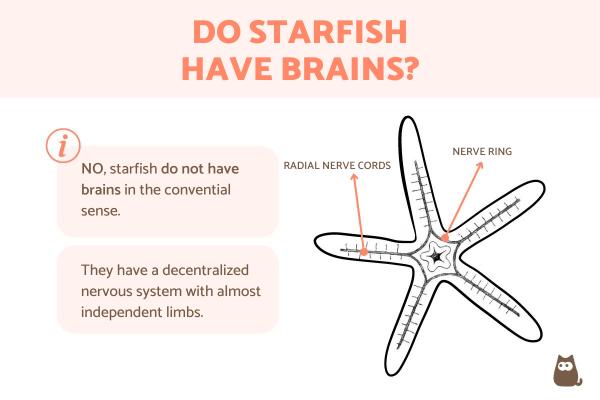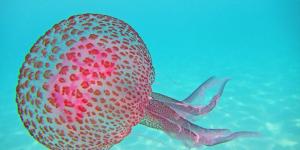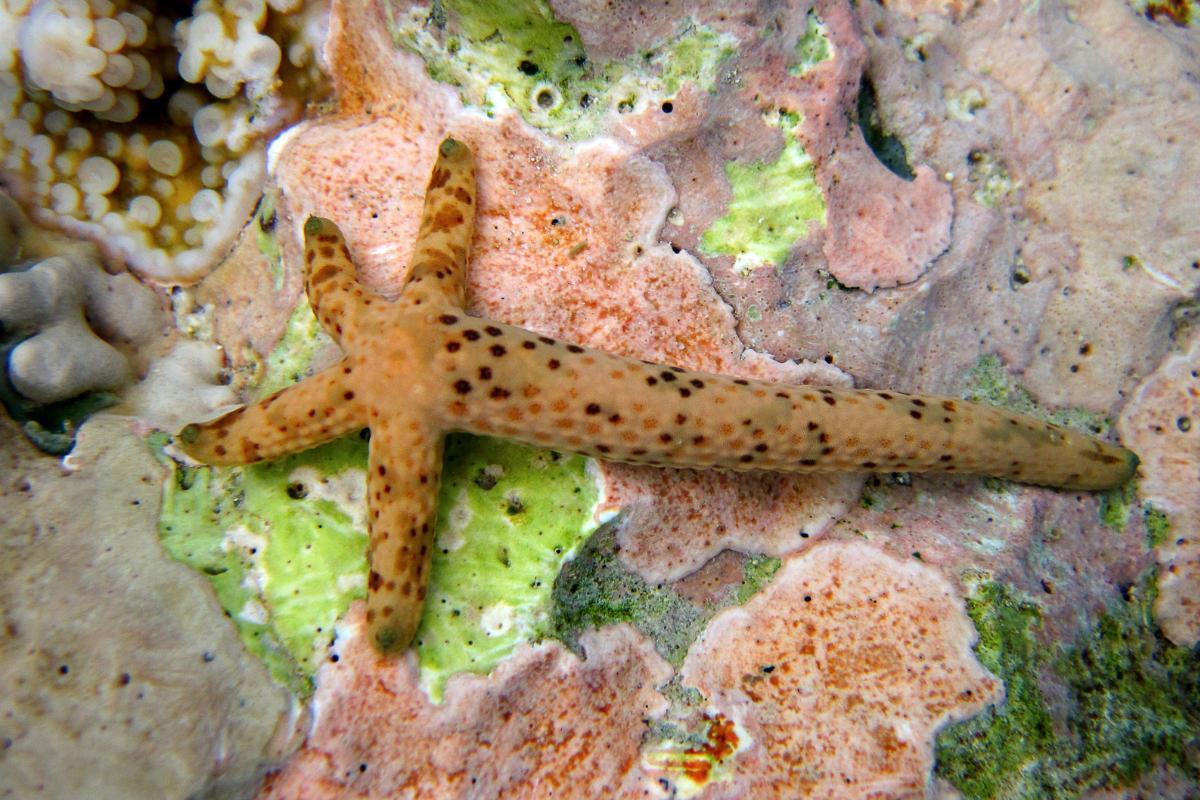Does a Starfish Have a Brain?


As vertebrates, all fish have brains which they use to carry out various functions in their environments. Starfish may be in the shape of a star, but they are not actually a fish. From the phylum Echinodermata, starfish or sea stars are also known as asteroids because they compromise the class Asteroidea. This is a class of marine invertebrates. While a minority of invertebrates have simplified brains, starfish do not have brains. This may surprise some of us since they are able to carry out seemingly complex functions such as coordinated movement and the regeneration of limbs.
At AnimalWised, we discover more about sea star intelligence by asking does a starfish have a brain? We look at how starfish are able to carry out their various functions without a brain, despite having a highly adapted nervous system.
Do starfish have brains?
Starfish do not have brains in the conventional and definitive sense. Humans and other vertebrate animals have a centralized brain that controls the central nervous system. Instead of a brain, starfish have a distributed nervous system which allows them to carry out the various functions needed for survival such as eating and reproduction.
To know more about starfish intelligence and how they function, we look at the different parts of the sea star nervous system:
- Nerve ring: this is located in the center of the starfish, around its mouth. The starfish's nerve ring acts as a coordination center for nerve signals that are transmitted throughout the animal's body. In this way, it functions similar to a brain, but it is not a brain in the conventional sense.
- Radial nerve cords: from the central nerve ring, nerve cords extend along each arm. These radial nerve cords allow each arm to function relatively autonomously, receiving and sending signals independently.
- Epidermal network: additionally, starfish have a diffuse nerve network in their epidermis. The epidermal network helps in detecting their environment and coordinating the movements of their tube feet. These tube feet are tubular structures they use to move and manipulate objects. We explain more about sea star movement with our article on how do starfish move?
Despite not having a centralized brain, starfish can perform complex functions thanks to their decentralized nervous system. Among them we can see movement and coordination, since they use their nervous system to coordinate the movement of their arms and tube feet. This allows starfish to move effectively in search of food and evade predators.
Sea stars can also respond to external stimuli, such as light and physical contact. They do so thanks to sensory cells distributed throughout their body that allow them to detect changes in their environment. Their nervous system plays a crucial role in regenerating new starfish arms. When a starfish loses an arm, the nervous system can reorganize and coordinate the growth of a new arm in its place.
Learn more about whether another invertebrate has brains with our article on do mosquitoes have brains?

Why don't starfish have brains?
The lack of a centralized brain is an evolutionary adaptation that has proven successful for starfish. Thanks to the structure of their nervous system they can adapt to their often harsh environment and carry out their lifestyle. Below we explain how they can do so without a centralized brain:
- Radial symmetry: as members of the phylum Echinodermata, starfish possess radial symmetry. This means their body is organized around a central axis. This type of symmetry is different from the bilateral symmetry that many other animals have, including vertebrates which have developed a centralized brain. The radial symmetry of starfish favors the distribution of nervous functions along their arms, something which does not require a centralized brain. This is unlike bilateral symmetry that has centralized the nervous system at one end of the body, i.e. the brain.
- Slow and sessile lifestyle: starfish lead a non-mobile lifestyle compared to other animals that require rapid and complex responses to their environment. In this sense, animals that need to move quickly and respond immediately to environmental stimuli (such as escaping from predators or actively hunting) tend to develop complex and centralized brains. Starfish do not require this speed in their responses due to their slower lifestyle.
Advantages of the decentralized nervous system
Since a starfish does not have a brain, we might think they are at a disadvantage. Starfish are actually well adapted to their environment, meaning they can survive in ecosystems that many others cannot. Far from being at a disadvantage, starfish have various evolutionary advantages, even if they are not considered as intelligent as other animals.
For example, the distribution of the nervous system throughout the body allows starfish to survive and function even when parts of their body are damaged. Each arm can operate semi-independently, meaning that the loss of an arm does not incapacitate the animal. This provides great resilience to physical damage. The ability to regenerate body parts is facilitated by the decentralized nature of its nervous system. This ensures the nerve signals necessary for the growth and development of the new arm are present locally.
Furthermore, evolution favors starfish structures that are energy efficient and better adapted for the environment to meet their needs. A centralized brain is energetically expensive to maintain. For starfish, a decentralized and less complex nervous system is sufficient for their survival needs and is less energetically demanding.
Learn more about how these marine animals are adapted to their environment by exploring the starfish life cycle.

How do starfish function if they don't have brains?
As we have explained, starfish have a decentralized nervous system in lieu of a centralized system that necessitates a brain. They are not considered intelligent creatures and have no emotional intelligence. However, they are well adapted to their environment and have thrived because of it. This means a sea star is able to function thanks to the following characteristics:
- Their arms are autonomous: the central nerve ring is located around the mouth, in the center of the starfish's body. It acts as a coordination center for nerve signals distributed throughout the body. From this ring, nerve cords extend down the length of each arm, known as radial nerve cords. These cords allow each arm to function relatively autonomously, transmitting sensory and motor signals along the arm.
- They detect stimuli from the environment thanks to the diffuse nervous network present in their epidermis, they can detect stimuli from the environment and coordinate the movements of their tube feet. These are tubular structures that they use both to move and manipulate objects. This epidermal nerve network allows them to respond to various external stimuli, such as light and physical contact. Doing so is crucial for their interaction with the environment.
- They make coordinated movements: despite not having a brain, starfish are capable of coordinated movements and respond effectively to stimuli thanks to their distributed nervous system. For example, they can move their arms and tube feet in a synchronized manner to move, search for food and evade predators.
- They regenerate their arms: they also have the ability to regenerate their arms, and this process is coordinated by their decentralized nervous system, which organizes the regeneration of lost tissue. The evolutionary design and characteristics of starfish, with their decentralized nervous system, is an adaptation that allows them to function efficiently in their marine environment.
Learn more about how starfish survive in their ecosystems by discovering how starfish are born.
If you want to read similar articles to Does a Starfish Have a Brain?, we recommend you visit our Facts about the animal kingdom category.
- Arnone, M. I., Byrne, M., & Martinez, P. (2015). Echinodermata. Evolutionary developmental biology of invertebrates 6, Deuterostomia, 1-58.
- Cobb, J. L. S. (1995). The nervous systems of Echinodermata: Recent results and new approaches. In The nervous systems of invertebrates: an evolutionary and comparative approach: with a coda written by T. H. Bullock. (pp. 407-424). Basel: Birkhäuser Basel.
- Formery, L., Orange, F., Formery, A., Yaguchi, S., Lowe, C. J., Schubert, M., & Croce, J. C. (2021). Neural anatomy of echinoid early juveniles and comparison of nervous system organization in echinoderms. Journal of Comparative Neurology, 529(6), 1135-1156.
- Pentreath, V. T., & Cobb, J. L.S. (1972). Neurobiology of echinodermata. Biological Reviews, 47(3), 363-392.
- Pérez, S. A., Gil, D. G., & Rubilar Panasiuk, C. T. (2014). Echinodermata.







